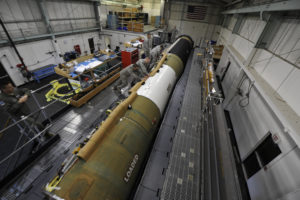
The full House approved a 2020 spending bill that would slow development of the next-generation, nuclear-tipped, intercontinental ballistic missile, bar deployment of a low-yield nuclear missile, and provide more money than sought to research the use of low-enriched uranium as fuel for the nuclear Navy. The bill went through on an essentially party-line vote of 226 to 203. It fully funds almost all the nuclear modernization programs in the Department of Energy and the Department of Defense, though it would provide…

 By
By 











